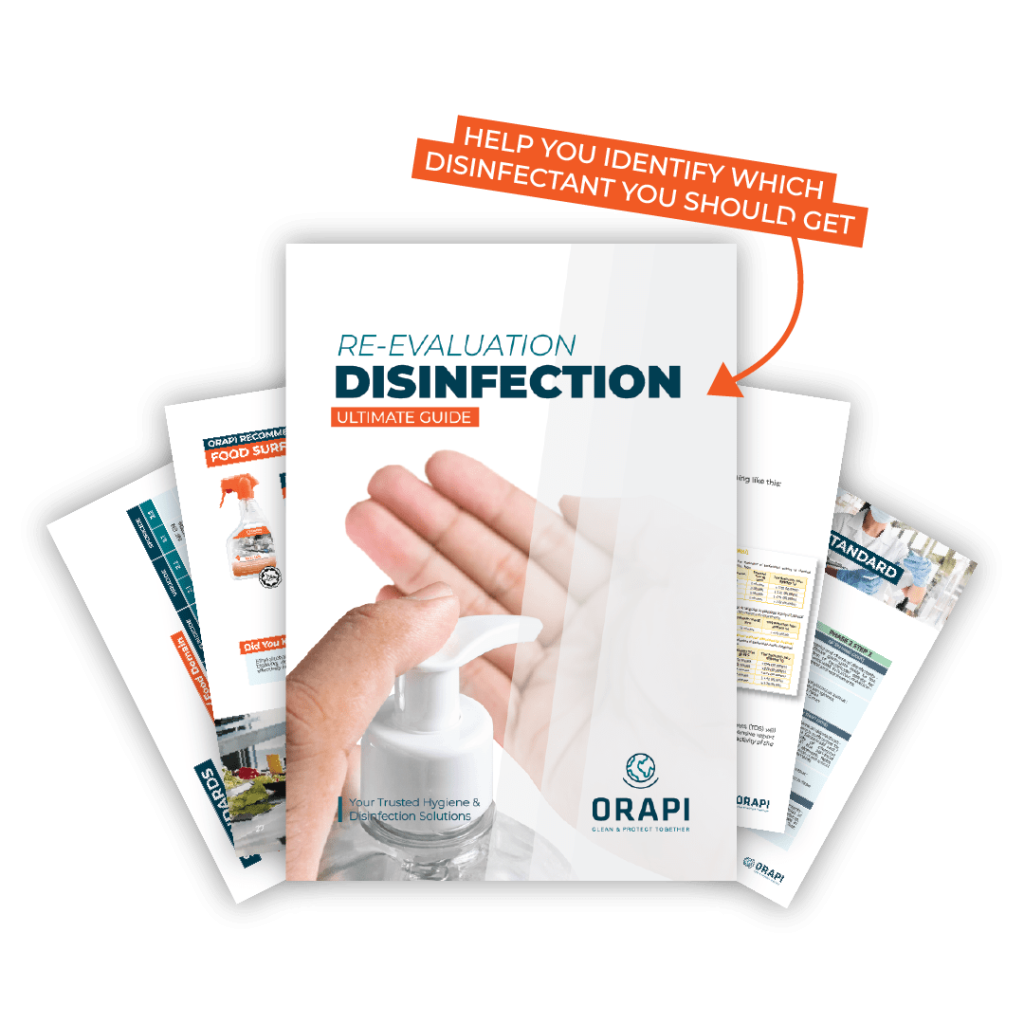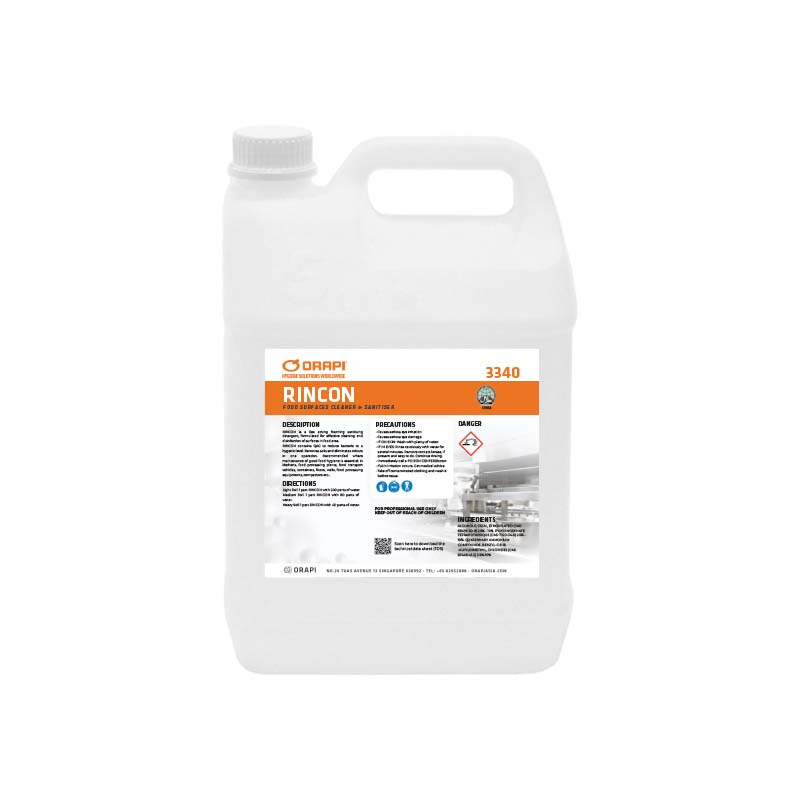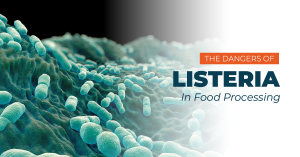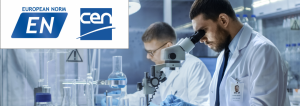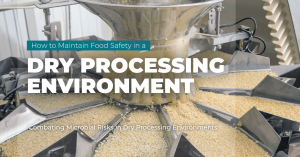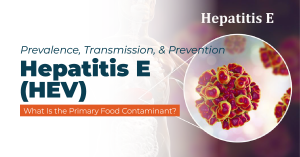
In the previous article, we posed the question, ”What is the difference between sanitising and disinfecting?” and informed our audience that to learn the distinctions between the two processes, they must learn to clearly define each. Starting with cleaning—a foundational step integral to sanitation and disinfection—this step is relatively straightforward to understand. This is followed by sanitising, which involves the use of chemicals to eliminate bacteria. Lastly, disinfecting is aimed at removing both bacteria and viruses. While our previous article extensively covered the intricacies of sanitising and its scientific underpinnings, this current piece shifts its focus towards disinfection. We will elaborate on the disparities between the two processes and recommend some of the finest disinfection products available in the market.
Optimising Disinfection
Keeping surfaces free from infectious agents is crucial for maintaining a clean and safe environment. Disinfection involves using chemical or physical agents to kill these agents outside the body. However, disinfectants can only work effectively on surfaces that have been thoroughly cleaned first. This means removing visible dirt, food particles, and debris before applying the disinfectant. It’s also important to rinse the surface to remove any residue. Sanitisers can be a convenient option as they combine cleaning and disinfection properties in a single product. However, following the same cleaning and disinfection process is essential to ensure the sanitiser works effectively. This means providing a clean surface first and then disinfecting it. Regular monitoring and record-keeping of cleaning and disinfection programs are necessary to ensure their suitability and effectiveness. It’s recommended to monitor them once every six months.
What Is the Function of a Disinfectant?
Which Viruses Can Disinfectants Kill?
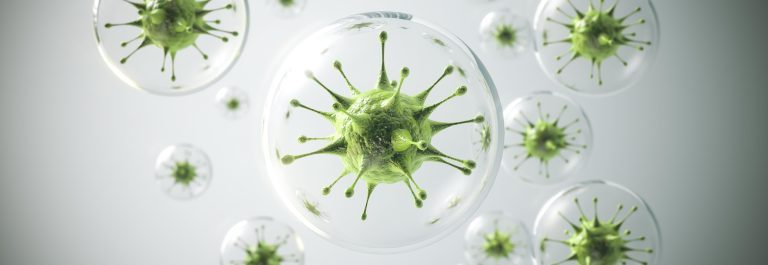
Disinfectants, available in various formulations, defend against many potentially dangerous microorganisms, encompassing viruses, bacteria, bacterial spores, and fungi. Among the primary harmful microorganisms that disinfectants safeguard against are:
- Influenza
- Penicillium chrysogenum
- Mould fungus
- E.coli
- Clostridium difficile (C.Diff)
- Lipid-enveloped viruses, including hepatitis B, hepatitis C, and HIV
- Staphylococcus aureus
- Pseudomonas aeruginosa
The Science Behind Disinfecting
Factors That Affect the Activity of Disinfectants
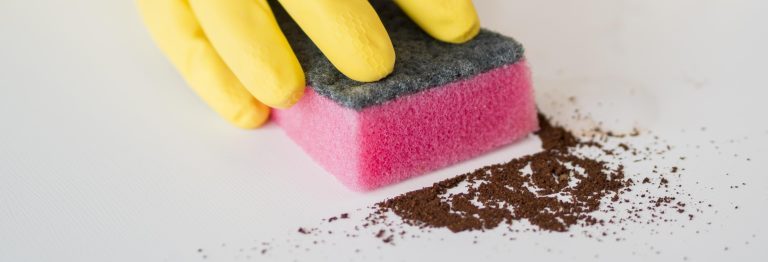
Surface and Pretreatment Considerations
The type of surface and the presence of any pre-existing contaminants significantly impact the effectiveness of disinfection. Surfaces with complex structures or multiple pieces, joints, and channels pose greater challenges for thorough sanitation than flat surfaces. Additionally, the presence of dirt or visible soiling can impede the action of the disinfectant, either by reducing its availability or by protecting microorganisms. Adequate pretreatment of surfaces, especially when visibly soiled, is fundamental to ensure or enhance the microbicidal efficacy of the disinfection procedure.
Microorganism Characteristics
The efficacy of disinfectants is heavily influenced by the number and types of microorganisms present. Recognising the diversity among microbial classes, it becomes essential to carefully choose disinfectants tailored to specific needs. Complicating matters, some microbes demonstrate surface resilience, employing mechanisms such as endospore production or biofilm formation to resist the action of disinfectant agents.
Disinfectant Properties
Once the appropriate disinfectant is identified, the concentration of its active ingredient becomes a pivotal factor. Experimental measurement of the kinetics of inactivation reveals the impact of concentration changes. Microbicidal concentration gains significance in the context of microbial resistance, especially given increasing awareness and restrictions on the environmental discharge of potentially harmful chemicals.
pH Influence
The pH level of a disinfectant solution plays a dual role in determining its efficacy. Firstly, it can alter the chemical structure of the disinfectant itself, affecting its overall activity. Secondly, changes in pH can modulate interactions between the disinfectant and microbial cells. This is particularly relevant for certain microbicides that are effective in their ionised or unionised forms. Maintaining specific pH levels is crucial for ensuring disinfectant products’ stability and maximum germicidal efficacy.
Formulation Impact
The formulation of a disinfectant is a critical factor that significantly influences its activity. These products include various excipients, such as solvents, surfactants, thickeners, chelating agents, colours, and fragrances. The interactions between these excipients and the active agent can affect the overall effectiveness of the formulated disinfectant. Unfortunately, specific information about these interactions is often proprietary and considered trade secrets.
Exposure Duration
The duration of contact between a disinfectant and surfaces is a key determinant of its microbicidal activity. Although there is a general trend of increased efficacy with prolonged exposure, the relationship is not always straightforward. Manufacturers provide specific exposure time recommendations, crucially detailed on product labels, to ensure optimal results. Adhering to these guidelines is essential for the effective use of disinfectants.
Temperature Influence
Temperature is a critical parameter influencing pathogens’ survival and disinfectants’ efficacy. Elevated temperatures can impact vital proteins, enzymes, and genomic stability, potentially enhancing the germicidal activity of certain chemicals. However, care must be taken to prevent the drawbacks associated with high temperatures, such as chemical evaporation and degradation. In tropical regions with high room temperatures, special attention is needed to maintain the shelf-life of disinfectants.
Additional Ideal Disinfectant Characteristics
In addition to the factors influencing disinfectant activity, an ideal disinfectant should possess certain attributes. It should demonstrate a broad spectrum of effectiveness against various microorganisms, act rapidly, be compatible with various materials, and, importantly, be safe for humans and the environment. These characteristics contribute to the overall effectiveness and acceptability of disinfectant products in multiple applications.
What is the Duration for Disinfectants to Take Effect?

Disinfectants generally do not yield immediate results. It is necessary to allow sufficient time for the chemical compound (or heat/light) to dismantle the molecular bonds within bacterial cell membranes. The duration required for disinfection varies based on factors such as the type of microorganism, environmental conditions, surface composition, the specific chemical agent used, and other factors mentioned above. This process can range from 60 seconds to 60 minutes, but, on average, contemporary disinfectants typically achieve effectiveness in approximately 5 minutes.
Addressing Misconceptions About Disinfectants
Most Common Disinfectants

Hydrogen Peroxide
Peracitic Acid
Peracetic acid (CH3COOOH) is an organic peroxide known for its efficacy against mycobacteria, viruses, spores, and moulds, even at low concentrations. It exhibits greater antimicrobial potency compared to hydrogen peroxide. Acting as a robust oxidising agent, it undergoes harmless decomposition, yielding acetic acid and hydrogen peroxide as by-products. Widely utilised as a surface disinfectant and for sterilising medical devices, a commercially available 15% aqueous solution containing a blend of peracetic acid, acetic acid, hydrogen peroxide, and water is commonly employed for disinfection.
Quaternary Ammonium Compounds
Quaternary Ammonium Compounds (Quats) are the preferred choice for disinfection in hospitals and institutions due to their rapid efficacy against a broad spectrum of microorganisms. Formulated alongside various detergents, Quats offer a dual function, serving both as cleaners and disinfectants. Widely employed in routine environmental sanitation of noncritical surfaces such as floors, furniture, and walls, these solid bactericidal agents exhibit particular potency against Gram-positive bacteria and virucidal activity against enveloped viruses like herpes simplex, adenovirus, and vaccinia. However, it’s important to note their limitations, as Quats are not sporicidal and generally lack tuberculocidal or virucidal effects against hydrophilic viruses. Caution is advised against spraying or fumigation for this chemical disinfectant, as some instances have revealed cases of occupational asthma resulting from exposure. Typically, these disinfectant agents are applied using a cloth or wipe saturated with the disinfectant solution, which may comprise mixtures of Quats.
ORAPI RECOMMENDS:
DESTINY is a versatile wide-spectrum disinfectant based on quaternary ammonium compound (QAC), for cleaning and disinfection of surfaces in food processing, dairy and beverage industries. DESTINY offers an excellent disinfection activity against gram-positive and gram-negative micro-organisms, bacteria, yeasts, moulds, fungi algae etc.
Chlorine Compounds
Chlorine-based disinfectants are highly recommended when cleaning bodily fluids and eliminating resistant viruses in various organisms due to their relatively quick kill times and affordability. However, it is important to handle them with care, as they can be corrosive and cause irritation if not used as directed.
To avoid hazardous situations, it is best to substitute elemental chlorine gas with chlorine-releasing agents, such as sodium hypochlorite, also known as bleach. While bleach is characterised by high microbicidal efficacy and low toxicity to humans, it can still be irritant and corrosive. Nevertheless, it is safe to use on materials like ceramics, methacrylate, and cement.
Sodium hypochlorite, in particular, can potentially eliminate bacteria, viruses, fungi, mycobacteria, and spores, making it an essential component in the surface disinfection of healthcare facilities and medical equipment. However, the efficacy of chlorine-releasing agents depends on the pH and FAC of the water.
For best results, it is preferable to use alkaline NaOCl solutions for disinfecting against vegetative bacteria, fungi, and yeast, as well as fungal conidia and viruses. The germicidal efficacy is even greater when the pH is around 5.5 and 8.
Alcohols
Alcohols, such as ethyl alcohol (ethanol) and isopropyl alcohol (isopropanol), are effective disinfectants due to their rapid bactericidal properties against various microorganisms. The effectiveness of these alcohols in killing bacteria like P. aeruginosa, Serratia marcescens, E. coli, Salmonella typhi, S. aureus, and Streptococcus pyogenes within 10 seconds by concentrations ranging from 40% to 100% ethanol.
The antimicrobial activity of these alcohols is attributed to their ability to cause protein denaturation. They work by disrupting the structure of proteins, leading to the death of microorganisms. However, it’s noted that alcohols have no effect on spores.
Water also plays a crucial role because, in its absence, proteins are not readily denatured by alcohol. A 70% alcohol solution is highlighted as more effective than pure (99%) alcohol as a sanitiser, and concentrations below 50% are considered to have no practical value.
Alcohol concentration is expressed by weight/weight percentage (%w/w) or volume/volume percentage (%v/v). The concentration is linked to the evaporation rate, with higher concentrations evaporating more quickly. The addition of surfactants or a combination with other substances like alkali, mineral acids, and hydrogen peroxide can overcome issues related to evaporation speed.
However, it’s important to note that alcohols have limitations, including poor detergent properties, toxicity, and flammability. The flashpoint (the minimum temperature at which vapours ignite in air when exposed to a flame) is a concern and higher concentrations of alcohol result in lower flashpoints. The flammability of alcohol is highlighted as a significant concern. Additionally, while alcoholic disinfectants are not corrosive or staining, they could potentially damage certain instruments, such as by swelling or hardening rubber.
ORAPI RECOMMENDS:
- One-step disinfectant and cleaner.
- Professional formulation recommended for surface cleaning and disinfection in medical, food, industrial, offices, and childcare.
- Reduce viral contaminations.
- Leaves a fresh scent.
- Ideal for everyday cleaning and disinfecting: toilets, rubbish bins, microwaves, working surfaces, countertops, tables, fridges, etc.
- No-rinse.
Aldehydes
Aldehydes exhibit strong efficacy against tuberculosis-causing bacteria, albeit requiring a high part per million (ppm) concentration for optimal disinfection. Certain bacterial strains have developed resistance to aldehydes, leading to associated health issues such as asthma. Additionally, aldehydes may leave a greasy residue and necessitate an alkaline solution for application.
Iodophors
Idophors find application in disinfecting certain semi-critical medical equipment; however, due to their propensity to stain surfaces and emit an unpleasant odour reminiscent of iodine, their use in facility maintenance has diminished. Historically, health professionals primarily employed iodine solutions or tinctures as antiseptics for skin or tissue, yet the inherent instability of aqueous solutions led to the development of iodophors. These formulations, combining iodine with a solubilising agent or carrier, serve as both antiseptics and disinfectants. Iodophors, such as the well-known povidone-iodine, maintain the germicidal effectiveness of iodine while offering increased stability and reduced toxicity.
Surfactant iodophors, containing cationic surfactants, non-ionics, polyoxymers, or polyvinylpyrrolidone, may enhance detergency activity despite iodine’s lower chemical reactivity than chlorine. Furthermore, surfactant iodophors demonstrate greater resilience against the presence of organic matter than chlorine.
An iodophor applied at 25 ppm of available iodine functions as a sanitiser, but the same product at 75 ppm falls into the disinfectant category. Upon release, iodine swiftly permeates the microorganism’s cell wall, oxidising thiol groups and disrupting protein and nucleic acid structures.
Phenolic Compounds
Phenolic Compounds exhibit potent efficacy against pathogenic bacteria such as Mycobacterium tuberculosis, fungi, and viruses. However, their effectiveness comes at a cost, as they are highly toxic and corrosive, simultaneously targeting both organisms and surfaces. Some regions have implemented disposal restrictions for Phenols due to their adverse effects.
These compounds interact with specific plastic surfaces and are absorbed by porous materials. Insufficient rinsing may result in alcohol residue, leading to skin irritation or depigmentation. Additionally, the use of phenols can be economically burdensome. Literature reports have also linked them to idiopathic neonatal hyperbilirubinemia in infants.
Published findings indicate that commonly used phenolic compounds demonstrate antimicrobial efficacy against bacteria, fungi, and viruses, including HIV, at their recommended dilutions. However, reports highlight limitations, revealing that phenolic disinfectants like ‘Stericol’ and ‘Lysol’ exhibit only partial effectiveness against Coxsackie B4, Enterovirus 11, and Poliovirus.
Conclusion: What Is the Difference Between Sanitising and Disinfecting

In summary, to answer the question ‘What is the difference between sanitising and disinfecting it is important to distinguish between sanitising and disinfecting. While the previous article focused on sanitising, this piece delved into the science of disinfection. Disinfectants are crucial in neutralising microorganisms on surfaces, influenced by factors like microorganism characteristics, disinfectant properties, pH levels, formulation, exposure duration, temperature, and surface considerations. Dispelling misconceptions, the article highlighted common disinfectants with unique attributes. Optimal disinfection requires a nuanced understanding of these factors and selecting suitable products tailored to specific needs.
